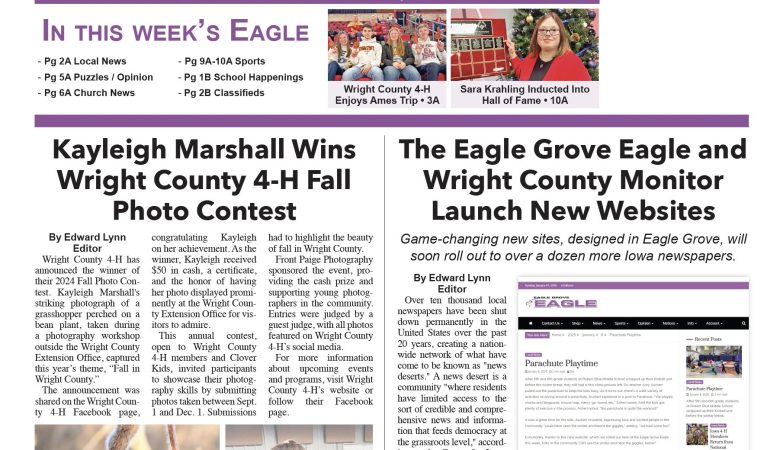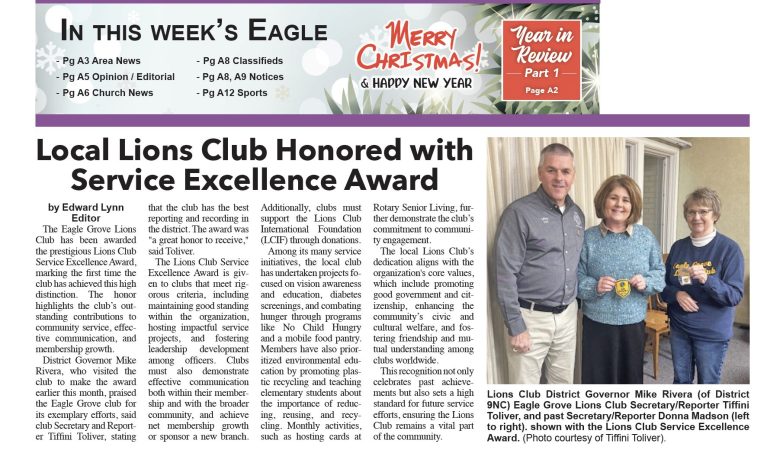Two months after donating her kidney to a toddler she had never met, Eagle Grove resident Heather Kimbrough is doing well and hoping to one day get to meet little Ryder Geisler of Hutchinson, Minnesota face-to-face.
Facebook has been credited many times with reconnecting long lost friends and loved ones, but Kimbrough had no idea that a day surfing the social media site back in August of 2020 would take her down a road that would lead nearly 200 miles away to help save a child’s life. This ultimate act of kindness story began when she happened upon a post shared by her sister who lives in Minnesota about her babysitter’s cousin’s son, Ryder. His mother, Desiree Teubert, was making a desperate plea. Her son, who was not even supposed to make it past pregnancy, was born with zero kidney function.
“He was actually given less than one percent chance to survive,” said Teubert.
But little baby Ryder proved to be a fighter. He did survive. He was on life support the first three weeks of his life and spent the first six months in the hospital…and he persevered. But as he approached his second birthday, he could not do the things a healthy toddler can usually do. He couldn’t so much as crawl, talk, or even eat on his own, and he needed dialysis 12-hours a day. He needed a kidney.
“His blood type was my blood type and I knew that I was likely a possibility to be a better match that way, so I filled out the application,” Kimbrough said.
Then she went about her normal life, which included working overnight shifts at the Halfway House in Fort Dodge. A couple of weeks later, she noticed she had a missed call from an unfamiliar number. When a call from that same number came a few days later, she answered. They said, “Are you still interested in trying to see if you could donate a kidney to Ryder?” She responded without hesitation, “Absolutely.”
The process started by going in for blood work and a 24-hour urinalysis(UA) in Clarion, followed a bit later by a second UA to take along to her University of Minnesota appointment on January 8, 2021. While there, she had a third UA done along with a bunch of additional blood work, a CT of her kidneys, an X-ray of her lungs, and an EKG of her heart just to make sure everything was okay for her surgery. At the U of M hospital appointment she also met with the surgeon, a kidney doctor, a counselor, a nutritionist, and prior to that the transplant coordinator.
On February 8, she got the official call. She was approved for the transplant. She was shocked because she was told early on in the process that only about 20 percent of prospective donors actually get the go-ahead because all of these tests uncover something in the other 80 percent that prohibits the donor from going through with the surgery.
“When they called and told me (I was approved) I was like oh, okay,” admitted Kimbrough.
She called her sister for more details, who really knew nothing more than what had originally been shared on Facebook.
When Kimbrough told her, “Well, I’m going to go do this,” her sister responded, “Well, weren't you prepared for this?”
Kimbrough admitted, not really, because 20 percent means that only one out of five people are actually ever approved for the donation.
“It was a little bit of a shock…I mean, only 20 percent,” she reiterated.
In the back of Kimbrough’s head, she admitted that through all of the testing she thou
ght they would probably find something wrong with her and then she would have to go to the doctor to get something else fixed. But they didn’t. She was healthy and able to donate.
Naturally, there were some questions she and her three children (ages 22, 16, and 12) had, like what happens if something goes wrong with the one kidney she is left with? Their nerves were calmed when they found out she would automatically be put at the top of the transplant list. Her daughter wanted to know what the survival rate was for people who donate kidneys? Studies have shown the 20-year survival rate to be 93.5 percent. And as surgery day got closer, Kimbrough admitted that there were a few more “what ifs” that set in…what is the expectation for me after the surgery? What if something goes wrong? What if something gets left inside of me? But she wasn’t going to let those fears change her mind. She cleared her calendar with work, got a COVID test, quarantined for a mandatory two weeks before surgery, and then, finally, Teubert’s plea was answered and her little boy got a new kidney on Friday, March 19, 2021…from a total stranger they had never even met.
“Heather is a true life saver. We often hear about family members being living-donors to someone they know, but Heather doesn't know us. I was shocked when a complete stranger was willing to make such a selfless act,” said Teubert.
While they were removing the kidney from Kimbrough, little Ryder was being prepped to receive that kidney in a surgery room nearby. That’s when the doctor came into his room and told the pediatric surgeon that Kimbrough’s kidney was actually bigger than they had expected. But this wasn’t a bad thing…in fact, it was a good discovery because that means the kidney will actually last longer. The hope is that it will last him long enough for science to perfect a technique they are currently working on – 3D printing of a kidney using the DNA of the sick patient to create a perfect match. This would be life-changing as the average wait for a kidney match/donation is about seven years.
After the five-hour surgery, Kimbrough said she woke up feeling great, in fact, she asked immediately if she could have food.
The surgeon responded jokingly, “I have never seen someone eat while they are still in recovery.”
This was a good sign of a successful recovery to come.
The next afternoon, Kimbrough got the go-ahead to be discharged if she wanted. She accepted with the understanding she would stay in a nearby hotel until Monday in case she needed help. At the hotel when she discovered she couldn’t lay flat in a bed (she was raised up in the hospital). She used all the pillows to prop herself up and made it through the night. Sunday morning she began having some pain in her shoulders and was feeling more uncomfortable. Although she had told the hospital staff she would stay in the hotel until Monday, she just wanted to be back in her own house, so they left. Once at home she laid on her couch, propped up by the side arms, and she felt much better.
“I had pain every now and then, and I was being a big baby about everything,” Kimbrough said lightheartedly.
So she joined some Facebook groups of other donors. She found them very helpful, especially when she discovered an explanation for “phantom pain” where the “kidney hole” is. In the group she also discovered that some people said the pain was like night and day for them…that they literally woke up one morning and the pain was just gone. She clinged to that hope.
“Literally at my four-week mark I was in horrible pain, could hardly do much, and then on Friday I started cleaning my house and thought, ‘I’m doing good,’” described Kimbrough. She went back to work the next week.
It was hard to tolerate, but she knew it was worth it for Ryder’s sake. One month of discomfort for her meant a lifetime of feeling better for this little boy.
“The day Ryder got the kidney, it started producing urine,” said Kimbrough.
The need for dialysis and oxygen were gone. Even the color in his face was improving dramatically.
Three weeks after the surgery, Ryder celebrated his second birthday, and a second chance at a normal life.
“Nothing has changed for me (after the surgery), but his life is completely different,” said Kimbrough humbly. “It’s one little thing that had a major impact. He now has the freedom to not be hooked up to a machine and he is now able to terrorize his mom like a normal two-year-old.”
“Ryder was on dialysis 12-hours-a-day (before the transplant). Now imagine having doctors appointments and driving time…on top of that. That doesn't leave him with much time to be a kid,” said his mom. “Now he wakes up in the morning and is ready to play. He is able to stay and watch a night movie with the family or sit by the campfire.”
“I did nothing. I just laid on the gurney for a few hours,” said Kimbrough modestly.
Teubert said Ryder is doing very well. At the moment, they are still figuring out labs and medication, and he still has a gtube to eat, but he’s making great progress. His vocabulary has also changed as he is trying to say more words.
“We are anxious to go back to physical and occupational therapies to see other changes in him,” said Teubert.
As he continues to get stronger, there will be more changes ahead for Ryder. In addition to kidney problems, he was also born with his hips out of socket. Doctors couldn't do surgery until after the kidney transplant, so that is the family’s next goal.
“That wouldn’t have been possible without Heather's sacrifice, as there is a time-frame on hip surgery,” said Teubert gratefully. “Heather will always be a part of our family's lives. She not only touched our lives, but so many people that were following Ryder's story.”
If you would like to know more about kidney donation, you can fill out a questionnaire at https://www.umnhealthlivingdonor.org/






